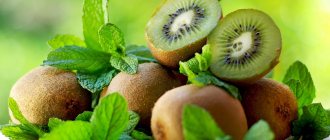What is arugula, description
Arugula is a herb from the Cruciferous family. In Russia it is called caterpillar or indau. Arugula is the Italian name for a plant that has become popular in everyday life. In the restaurant you can buy salad from and other dishes with the addition of this spicy herb. Its aroma is mustard-pepper with nutty notes.
Arugula in the garden
Arugula (this is also the correct name) grows on dry, loose soil in Europe, Asia, and northern Africa. In Russia, it is mistaken for a weed and fed to domestic animals. In many European countries, arugula is grown as a salad plant. The largest plantations are located in Italian Venice.
This plant is an annual, not particularly decorative, but has a unique, pleasant smell. The stem is up to 40 cm high, branched, with fibers. The fleshy green leaves are also dotted with sparse villi or smooth, the lower ones are dissected with jagged lobes. Small light yellow flowers are collected in a raceme inflorescence. Small brown seeds ripen in pods.
Compound
The valuable nutritional properties of arugula are explained by its chemical composition. Although the plant has been known since antiquity, it began to be studied only at the end of the 20th century. In Mediterranean countries during the Roman Empire, this herb was considered a powerful aphrodisiac.
Arugula has an extensive chemical composition
Chemical composition:
- vitamins – E, C, A, K, group B
- mineral elements – zinc, sodium, potassium, calcium, selenium, copper, phosphorus, magnesium and iron
- flavonoids
- tannins
- sulforaphane is a plant organic compound with antibacterial and anticancer effects
- glucosinolates - phytonutrients, which are biologically active substances, when entering the body, work as powerful anoxidants
- diindolylmethane – a substance that has an antitumor effect
Arugula owes its pungent, bitter taste to the glucosinolates it contains. These substances are capable of retaining carcinogens that enter the body with food and medications, they reduce the risk of the formation of cancer cells. After gastrointestinal diseases, glucosinolates may not be broken down in the intestines. Therefore, to obtain maximum benefit, it is necessary to restore normal intestinal microflora.
Arugula is low-calorie, it contains 94% water, so you shouldn’t expect a big boost of energy from consuming this herb. It’s another matter if you season pizza or meat salad with it.
Medicinal properties and contraindications
- It is very important today that this product is directly involved in the prevention of cancer.
It contains much more anti-cancer substances than, for example, the popular broccoli.
- The presence of a large amount of vitamins, in particular vitamin C, gives arugula antiviral and anti-infective properties. Strengthens the immune system.
- The vitamin K content protects a person from internal and external bleeding due to wounds or other skin diseases.
- Vitamin A is a strong antioxidant that has a beneficial effect on normal metabolism, the formation of bones, teeth, hair and nails, improves vision, and is necessary for the stable functioning of the immune system.
- Due to the high content of B vitamins in this product, arugula has an effect on the nervous system, improves mental abilities, mood, and increases the tone of the muscles of the digestive tract.
That is, you will benefit from consuming these amazing greens for breakfast in the morning, and you can also benefit from them if you have visited the dentist, or have motion sickness, or are wisely trying to reduce the negative effects of alcohol or tobacco on your body.
- An excellent diuretic that can improve the functioning of the kidneys and urinary tract.
- Iodine plays a major role in the prevention of thyroid diseases.
- The functioning of the gastrointestinal tract improves.
- Helps reduce excess weight.
- Reduces cholesterol.
An increased level of this blood clot formation can lead to stroke, heart attack or other vascular diseases. Eating foods high in lipids in your daily diet will help prevent these diseases.
- Increases hemoglobin.
Arugula contains iron in the amount of daily requirement necessary for human health.
- The presence of folic acid will be useful for women planning pregnancy.
- Interestingly, this unusual salad is even credited with aphrodisiac properties, as well as increasing potency in men.
Application in medicine
The ideal combination of vitamins and minerals has allowed this versatile cabbage to take pride of place in various fields.
Benefits for women
The presence of beauty vitamins in arugula makes it very attractive to women. If you eat this salad, you will:
- you will look great;
- take care of your healthy diet;
- easily maintain your weight or strive for the ideal;
- use it to some extent as an aphrodisiac;
- receive compliments as a great housewife because this product will add a piquant taste to your dishes.
For hair
In addition to internal use, the use of arugula oil for hair is extremely beneficial. It will strengthen the roots, nourish them with useful substances, restore after damage and eliminate dandruff.
If you have a problem with hair loss, it is recommended to eat 2 tbsp daily. l. oils, at the same time not forgetting to rub them into the hair roots, leaving the mask on overnight.
When losing weight
Arugula is considered the main friend of a losing weight girl. This is due to its beneficial properties. Due to the presence of certain vitamins and minerals, the human body accelerates the metabolic process, removes harmful waste and toxins and has a diuretic effect. And, of course, we must not forget the low calorie content of this product, which promotes rapid weight loss.
Due to the high fiber content, even a small amount of it gives a person a feeling of fullness.
For diabetes
Regular consumption of rocket salad is beneficial for people suffering from diabetes, as it helps reduce blood sugar levels. Arugula is indispensable for people who suffer from stomach ulcers or gastritis, as it strengthens the stomach walls.
Beneficial features
Including arugula in your daily diet can improve your health . You can get the maximum benefit from the plant by consuming it fresh, as an addition to various salads, sauces and side dishes.
Arugula promotes health
Beneficial features:
- reduces blood cholesterol levels due to the content of plant fiber
- is a preventive agent for cancer
- contains special antitumor substances
- Diindolylmethane destroys the papilloma virus
- improves blood clotting, maintains the health of nerve cells, thanks to vitamin K (100 g of arugula provides the daily requirement of this vitamin)
- relieves swelling thanks to potassium
- has a diuretic effect
- has a positive effect on digestive processes
- has a lactogenic effect
- has an expectorant and antibacterial effect
- strengthens the immune system
- helps in the prevention of thyroid disease due to its iodine content
- increases libido, increases potency
- normalizes blood pressure
In addition, arugula contains 2.36% essential oil with a large amount of carotenoids , from which the body synthesizes vitamin A. This oil is useful for thinning capillaries and hair loss. The benefits can be obtained both by eating greens and by external use. Arugula is included in face and hair masks.
The benefits of arugula in its composition
Arugula salad is a storehouse of healthy vitamins, macro- and microelements. Although this green is more like a weed, the benefits of arugula for the human body are enormous. This is possible thanks to the healing composition of the plant.
Arugula is a storehouse of vitamins:
- Arugula salad is a valuable source of provitamin A. This is exactly what arugula benefits for beauty and youth.
- Vitamin K. By eating a salad with arugula, which contains at least 100 grams of greens, you will receive your daily intake of vitamin K. This will ensure healthy hematopoiesis and rapid healing of wounds.
- The benefits of arugula are also possible due to the high content of vitamin C in the foliage of the plant. And this is a well-known antioxidant.
- Vitamin E significantly enhances the effect of antioxidants. In addition, it takes care of skin health.
- Another thing arugula is useful for is its B vitamins. It contains almost all B vitamins. But the highest content of greens is vitamin B5.
- Salad with arugula is also useful for vitamin PP. The substance lowers cholesterol levels in the blood.
Fresh arugula and fatty acids in it:
- Wild mustard is rich in unsaturated fatty acids like Omega-3 and Omega-6.
Macro- and microelements in arugula:
- Macroelements: magnesium, sodium, phosphorus, etc.
- Microelements: copper, iron, zinc, etc.
Arugula for Life with Oils and Antioxidants:
- Salad with arugula will fill the body with amino acids due to the high concentration of mustard oil in it.
- Alkaloids, flavonoids, steroids, essential oils contained in the leaves are several other factors why arugula is beneficial.
Calorie content of arugula:
Arugula salad is a famous dietary dish. 100 g of arugula contains:
- 25 kcal;
- 2.57 g protein;
- 2.04 g carbohydrates;
- 0.65 g fat;
- 1.6 g fiber;
- 91 g water.
Knowing the composition of greens, it becomes more or less clear why arugula is useful. But in fact, the benefits of arugula are much greater than it might seem at first glance.
Possible harm
There are no completely harmless food products; each has its own contraindication. Likewise, arugula can cause allergies in some people.
Arugula can cause allergies
It is not recommended to use the herb during pregnancy, but when breastfeeding, on the contrary, it is very useful, as it increases the amount of milk in the mammary glands.
Arugula for women during pregnancy
If a woman loves arugula, then it can be consumed even during pregnancy, but in everything you need to know when to stop. If consumed in small quantities, the grass will become a real storehouse of useful elements and vitamins.
But still, it is better to avoid using grass during pregnancy. There is a small risk of developing muscle spasms, which can lead to increased uterine tone and, as a result, miscarriage.
If there is a risk of increased uterine bleeding, it is better to stop using the herb.
During lactation, the plant will stimulate milk production due to the presence of oxalates in it.
Application in home cosmetology
Arugula is used in home cosmetology to care for the skin of the face, décolleté and neck. The beneficial substances it contains have a rejuvenating effect, moisturize, tone, heal and disinfect.
Arugula has a rejuvenating effect
The herb is valued for the following substances:
- Glucoseinolates – serve as prevention of oncology, including melanoma, skin cancer
- Vitamin K – helps get rid of dark spots, puffiness and rosacea
- oleic and linoleic acids – give the skin elasticity and firmness, slow down aging, moisturize and soften
- sulfur – gives the skin radiance and a beautiful tone, has a healing and antimicrobial effect, eliminates acne
- Diindolylmethane – prevents the formation of warts and papillomas
Face masks with arugula greens are made 3 times a week, 1 time a day. Before applying the nourishing composition, the skin is cleansed and steamed so that the healing substances penetrate deeper into the pores and have the most positive effect.
Softening mask for peeling
For this mask you will need aloe pulp and lemon.
Ingredients aloe pulp – 1 tsp lemon juice – 1 tsp arugula – 3 tbsp. l
Application: Chopped arugula is mixed with lemon juice and aloe. Apply to the face, rinse with warm water after 25 minutes.
Recipe for spider veins
In addition to arugula, you will also need potato juice and sour cream.
Ingredients : chopped arugula – 3 tbsp. l potato juice - 3 tbsp. l sour cream - 1 tbsp. l
Application The mask is applied to the face and left for 25 minutes. Wash off with warm and then cold water.
Whitening and moisturizing mask
For this mask, in addition to arugula, you will need cucumber and zucchini
Ingredients: grated cucumber pulp – 3 tbsp. l grated zucchini pulp - 3 tbsp. l chopped arugula pulp - 3 tbsp. l
Application Mix the pulp of cucumber, zucchini and arugula. Apply to the face. After 25 minutes, wash off with cool water.
For skin elasticity
For this recipe you will need one teaspoon of olive oil.
Ingredients: chicken protein – 1 pc. olive oil – 1 tsp. chopped arugula – 3 tbsp. l
Application Mix the whipped egg white with butter and arugula. Apply a layer to the face, when it dries, apply another layer of the mixture. Leave for half an hour and wash off with warm water.
Recipe for wrinkles
Banana, arugula and cucumber will help get rid of wrinkles
Ingredients: banana – 0.5 pcs. cucumber – 0.5 pcs. arugula juice – 2 tbsp. l
Application Finely grated cucumber is mixed with mashed banana and arugula juice. Apply to the face and leave for 25 minutes. Wash off with warm water.
The use of arugula in folk medicine
Arugula salad to increase potency
A salad with arugula, pepper and honey will help improve a man's potency.
Arugula salad recipe for potency
- Grind 100 g wild mustard leaves.
- Add 2 tsp. ground black pepper.
- Add 1 tsp. honey, stir.
To see how arugula is beneficial, consume a teaspoon of this product a day for 60 days. You yourself will be surprised by such a surge of male power.
Arugula as a remedy for treating skin diseases
The benefits of arugula can be not only when it is consumed internally. Skin diseases can be successfully treated with green paste. To do this, you need to greatly chop or grind the green foliage. This paste helps to disinfect a cut or wound, get rid of pimples, blackheads, boils and warts.
To remove a wart, you need to apply the paste to the skin for a long time. To do this, roll up the bandage in several layers and apply homemade medicine to it. Then the paste is applied to the wart, and the bandage is secured using a plaster. You need to change the medicine to a fresh one every day. In less than a month, the wart will shrink in size and dry out. And this is a direct sign that the growth will soon disappear on its own.
Arugula oil for strong hair
The benefits of arugula for hair are also invaluable. Green oil will strengthen your hair and make it healthy and shiny. The product is sold in pharmacies. It is enough to consume a tablespoon of oil once a day, adding it to various fresh salads. Well, to fully understand how arugula is beneficial for hair, try rubbing herb oil into your scalp every 3-4 days and not rinsing it off until the morning.
What are the benefits of arugula for facial beauty?
Arugula salad helps rejuvenate the skin from the inside. But the beauty benefits of arugula are also possible through external use. To do this, you need to prepare a mask, which consists of three ingredients mixed in equal proportions: chopped arugula leaves, sour cream and cottage cheese.
Apply the resulting mixture to your face and do not wash it off for 15 minutes. After the specified time, you can wash off the mask, but not with water, but with green tea, so that the effect is maximum. This mask should be used 2 times a week.
Arugula and its beneficial properties against dry and problematic skin
Again, a recipe that does not use arugula salad, but a special mask. This is a relatively recent discovery of how arugula is beneficial for dry skin. To prepare the mask, grind 50 g of arugula and mix with 10 g of olive oil. Apply a face mask.
After 20 min. Wipe off the mask using a damp cloth soaked in olive oil. Well, after another 10 minutes, wash your face thoroughly with warm water. One or two uses of the mask per week are enough for the benefits of arugula to become noticeable.
Arugula herb for age spots
Arugula salad helps get rid of age spots. Thus, there is 1 point more that arugula is also useful for the skin in the form of a mask. To prepare it, you need to grind the green leaves in a blender to get 2 tablespoons of gruel. Add half a teaspoon of lemon juice to it, and the mask is ready.
Apply the product to an area of skin with a large concentration of pigment spots and leave for 10 minutes. After the specified time has passed, rinse off the product under the tap. To make the benefits of arugula in the fight against freckles and age spots visible, make this mask every 4 days.
Salad with arugula and tomatoes for weight loss
Now you will learn a recipe with which you will get an incredibly tasty arugula salad. If you replace breakfast or lunch with it every 2 days, you will 100% understand how arugula is useful for weight loss. This arugula salad is quite easy to prepare.
Arugula salad recipe for weight loss
- Place fresh herb leaves on a plate.
- Cut the tomatoes into slices and place them on top of the greens.
- Drizzle the salad lightly with olive oil and lemon juice.
- Place tofu cubes on top of tomatoes.
- Chop pine nuts and sprinkle them over the arugula salad.
This is an extremely tasty, healthy and low-calorie salad that will help you lose weight smoothly but surely.
Salad with arugula for overall health
And this arugula salad has benefits for the whole body. It will saturate your body with a complete set of vitamins and minerals to keep your body in good shape.
Ingredients for arugula salad
- beets – 300 g;
- a bunch of fresh arugula;
- red onion – 1 pc.;
- freshly squeezed lemon juice – 1 tsp;
- olive oil – 1 tsp;
- soy sauce – 1 tsp;
- mustard seeds - half a teaspoon.
Preparing arugula salad
- Roast the beets in the oven. Then cut into long pieces and cover the bottom of the plate with them.
- Spread lightly chopped arugula leaves evenly on top.
- Combine remaining ingredients to create a flavorful sauce.
- Pour the sauce over the arugula and beets.
- Sprinkle the arugula salad with mashed cottage cheese on top. A very good alternative is goat cheese.
Benefits of arugula oil
Arugula seed oil is a useful product for anyone who cares about their health. It is prepared by cold pressing, which preserves all the beneficial substances.
Arugula seed oil
The oil contains the following components:
- mustard oil
- fatty oil
- erucic acid
- linoleic, linolenic and oleic acid
- steroids
- thioglycosides
- flavonoids
- alkaloids
Thanks to the flavonoid quercetin, swelling and inflammation on the skin disappear; it is a strong antioxidant. Adding arugula oil to food is beneficial for hypertension and sarcoidosis. The oil is used externally in cosmetology to strengthen hair; it is added to medicinal masks for facial skin, shampoos, and creams.
Useful properties of the oil:
- restoration of the nervous system
- normalization of metabolism
- hair strengthening
- rejuvenation and cleansing of facial skin
- prevention of cancer
- improving the functioning of the gastrointestinal tract
Since the time the healing properties of the oil became known (and this happened, according to history, a very long time ago), women have been using it to grow beautiful and healthy hair.
Arugula oil helps cure seborrhea, strengthens hair follicles, prevents baldness, normalizes moisture levels in hair, stimulates their growth, and protects against negative factors. It is useful to lubricate split ends of hair with arugula oil and make masks for the scalp. Pure oil is rarely used in masks; more often it is mixed with various components to achieve a better effect. Some interesting recipes for your collection:
Recipe for strengthening hair follicles
Mix equal amounts of almond and arugula oil
Ingredients almond oil – 2 tbsp. l arugula oil - 2 tbsp. l
Application Mix the components, apply to the hair, and massage the scalp for 5 minutes. Wash off after 1 hour with warm water and shampoo.
Recipe for hair loss and dandruff
Ground red pepper combined with honey and arugula will help in the fight against dandruff
Ingredients honey – 1 tbsp. l arugula oil - 3 tbsp. l ground red pepper – 1 tsp
Application Heat honey to a temperature of 40 degrees. Add oil and pepper to it. Apply the composition to the hair roots. After half an hour, wash off with warm water.
Mask to add healthy shine to dry, weakened curls
This recipe is based on honey and egg yolk.
Ingredients: arugula oil – 2 tbsp. l sesame oil - 1 tbsp. l honey – 1 tsp. l yolk – 1 pc.
Application: Combine and beat the mixture of yolk, honey, and two types of butter. Distribute over the entire length of the curls. Wash off after an hour with warm water and shampoo.
Useful properties and composition of arugula
Nutritional value of arugula
The low calorie content of arugula—only 25 kcal per 100 grams—puts it among special foods.
In other words, arugula is a negative calorie food. That is, its absorption requires more energy than it provides.
Such properties make this green vegetable an indispensable product for losing weight and getting rid of excess weight. In addition, the fiber (dietary fiber) of arugula provides a good feeling of fullness.
Another feature of arugula is its high protein content of 2.6%. This is more than any fruit, including avocado (2%). Agree, this is decent for grass.
There are very few carbohydrates and fats in 100 grams of arugula (2.1 grams). and 0.7 g. respectively
Vitamins of arugula
Arugula contains many vitamins. At the same time, vitamins K and A, folic acid and vitamin C are most represented in it.
For example, vitamin A (beta-carotene) is contained in these greens at a rate of 40% of the daily value. And this vitamin, along with vitamin C, is an antioxidant and anti-cancer vitamin. Vitamin A protects the liver and improves vision.
It also activates the thyroid gland and has a positive effect on healthy skin.
This green vegetable contains less antiviral vitamin C, which is responsible for the health of our bones and teeth, skin and blood vessels. Its content is almost 17% of the norm. But this is also more than in carrots, onions, garlic or avocado. But animal products do not contain this vitamin at all. Boiled foods also contain almost no vital vitamin C. Read about where and how to get this vitamin without loss by following the link.
However, the main vitamin included in the composition and influencing the beneficial properties of arugula is fat-soluble vitamin K.
According to this indicator, our herbaceous plant is among the top 10 products. Arugula takes 9th place on this list, behind green onions and its relative, broccoli.
Menadione or vitamin K plays an extremely important role in the human body. Thus, vitamin K ensures blood clotting, strengthens the walls of blood vessels, prevents internal bleeding and promotes wound healing. And recent research has established the protective role of vitamin K for brain neurons and the prevention of dementia.
So, 100 grams of arugula contains 90.5% of the daily value of vitamin K for an adult.
Vitamin B9 also actively influences the beneficial properties of arugula, because it contains over 24%. Without this vital vitamin, it is impossible to fully renew the most important tissues and organs: skin cells, liver, mucous membranes, blood cells. B9 affects not only the immune system, but also the human psyche. Today in the United States the required daily intake of folic acid is twice as high as in Russia.
In addition, vitamins B5, B2, B6, B1, B4, E and B3 are present in smaller quantities in arugula, in decreasing order.
Micro and macroelements of arugula
Among the macroelements of arugula, calcium, iron and magnesium occupy a worthy place. Arugula contains the most calcium, 16% of an adult’s daily requirement. In conjunction with vitamin C, from the same arugula, calcium is actively integrated into our bones, strengthening them. Of course, any plant product contains less calcium than dairy products. But plant calcium is easily absorbed without loss or acidification of the body.
As for iron, arugula contains 14.6%. The walnut has the same indicator. And with beef, the difference in iron is only a few percent. Of course, lentils, soybeans and sesame are the undisputed leaders in this regard.
Iron is another important mineral that not only ensures the transfer of oxygen to all cells of the body, but also participates in hematopoiesis, like vitamin B9.
Therefore, arugula is a very suitable herb for the formation of healthy blood.
Phosphorus and potassium are two more macroelements that are included in the chemical composition of our green plant in an amount of 7% of the norm.
Arugula is especially rich in manganese. Manganese is a valuable trace element that is responsible for the absorption of iron and copper and affects the connective tissue of cartilage and joints, blood reproduction and the synthesis of neurotransmitters - intermediaries between nerve cells.
In addition, the green vegetable contains important microelements such as copper, zinc and selenium.
Growing on site and at home
Arugula in the garden
Arugula is an annual plant 20–25 cm high, some specimens grow up to 60 cm. It has an interesting leaf shape and a pleasant, pungent aroma. It is grown in a garden plot or at home on a windowsill in containers with soil. The only requirement for quality care is plenty of sun and timely watering.
Sowing seeds
Arugula seeds
Seeds are sown in rows at a distance of 30–40 cm. The planting depth should be about 1.5 cm. Before sowing, the furrows are watered. The first shoots will appear in 5–7 days. When they grow a little, they need to be thinned out, leaving 8–10 cm between plants.
This is a moisture-loving and cold-resistant crop; seedlings can withstand frosts down to -6 degrees. Arugula seeds can be sown from early spring until autumn, every 2-3 weeks. The plant loves the sun, but in hot weather you can choose an area with moderate shade for sowing. Otherwise, no special care is required. Arugula is suitable for any soil except acidic. It is sown from April to August, and it ripens in 20–25 days.
Pests and diseases
When planning a place to plant arugula, be sure to take into account what will grow nearby. Due to the fact that it is a member of the Brassica family, there should be no cabbage plants nearby. They share common pests and diseases, such as cruciferous flea beetles, which can destroy young seedlings within a few days.
Cruciferous flea beetle
At the first signs of damage - small holes on the leaves, lightly water the plants on top and pollinate with wood ash. The treatment is repeated after a few days.
Care
Caring for the plant is not difficult, it is undemanding in terms of conditions and requires minimal care. You need to loosen the rows, remove weeds, and don’t forget to water. Abundant watering is needed at least once a week. If you water the grass rarely, it will quickly produce flower stalks.
Arugula needs minimal care
Arugula quickly accumulates nitrates, so it is not worth fertilizing it with mineral fertilizers. It is better to feed with organic matter - wood ash or herbal infusion.
A few plants are left for seed to be sown next spring after the snow melts. The rest of the grass is cut before flower stalks appear, while it is tender and does not contain much pungency and bitterness.
Contact with metal destroys the beneficial biologically active substances of plant tissues. Therefore, it is better not to cut the grass from the garden bed, but to pick it; its juicy leaves crunch pleasantly under your hand.
How to grow on a windowsill?
You can grow arugula greens at any time of the year on the windowsill in your apartment. A month after sowing the seed, you can get juicy and aromatic leaves for salad.
Seeds are sown in a plastic container with drainage holes at the bottom. They are first soaked for a day in water with the addition of aloe juice (1 tsp per 1 tbsp. water) or in a honey solution (1/4 tsp. honey per 1 tbsp. water). Soak a napkin well with the solution, sprinkle seeds on it, and place it in a bright place.
Growing arugula at home
Drainage is poured into the bottom of the planting container - expanded clay, pebbles, pieces of foam plastic or brick chips. On top is a universal primer. Moisten the soil, transfer the prepared seeds onto its surface using a toothpick. Sprinkle a layer of earth (0.5 cm) on top. Cover the container with cling film.
Shoots from fresh seeds appear 2–3 days after sowing . The greenhouse is opened and transferred to a bright, warm windowsill. Moisturize without allowing the soil to dry out too much using a spray bottle.
When the seedlings have 3–4 true leaves, pick them in separate containers. You can use 250 ml plastic cups with a drainage hole at the bottom for seedlings. When the arugula bushes grow, they can be planted in larger pots.
Water the seedlings regularly, preventing the soil from drying out . If there is a lack of moisture in the soil, the taste of arugula deteriorates, it becomes too pungent and bitter.
Delicious recipes
It is not recommended to cut arugula with a knife.
Arugula is used as a healthy side dish for meat, fish and legume dishes; it improves digestion and perfectly complements the taste of food. Its green leaves should not be subjected to prolonged heat treatment during cooking. It is best to eat them fresh, in combination with spinach and fresh lettuce.
Salad of arugula, shrimp and vegetables
Products:
- hard cheese – 75 g
- arugula – 225 g
- olive oil – 15 ml
- lemon juice – 1.5 tbsp. l
- sea salt - to your taste
- shrimp – 120 g
- cherry tomatoes – 150 g
- garlic – 1.5 teeth
- soy sauce – 15 ml
- honey – 1 tsp
Preparation:
- Boiled-frozen shrimp are doused with boiling water and their shells are peeled.
- Pour oil into a frying pan, add peeled garlic, cut into halves.
- When it turns brown, take it out with a spoon and throw it away, and dip the prepared shrimp into the aromatic, garlicky oil. They will need to fry for half a minute on each side.
- Now you can assemble the salad on a plate. To do this, arugula leaves, washed and dried beforehand, are placed on a dish, with shrimp and cherry tomatoes cut in half on top.
- Pour everything with a mixture of soy sauce, honey, and lemon juice, sprinkle with grated cheese.
The finished salad can be mixed, sprinkled with cheese again, and garnished with arugula and cherry leaves.
Salad with mozzarella and arugula
Products:
- cherry tomatoes – 4 pcs.
- apple cider vinegar – 1.5 tbsp. l
- salt and pepper - to your taste
- mozzarella – 225 g
- arugula – 5 g
- olive oil – 3 tbsp. l
Preparation:
- Cut mozzarella cheese into slices.
- Tomato slices are cut to the same thickness.
- Place the salad on a plate, alternating tomatoes and cheese, placing arugula leaves between them.
- Drizzle olive oil mixed with vinegar, salt and pepper on top.
The dish is decorated with whole arugula leaves on top.
Arugula and bean salad
Products:
- canned red beans – 400 g
- arugula – 300 g
- sweet pepper – 2 pcs.
- garlic – 2 teeth
- feta cheese – 300 g
- sour cream or homemade mayonnaise – 100 g
- salt and pepper - to your taste
Preparation:
- The arugula is torn into small pieces by hand.
- Wash the beans.
- Cut the cheese into cubes.
- Add chopped sweet pepper, chopped garlic, salt, pepper.
- Place all the salad ingredients in a bowl and season with sour cream, homemade mayonnaise or natural yogurt to taste.
All salads should be eaten fresh, immediately after preparation. During long-term storage, beneficial substances are destroyed. It’s also delicious to use arugula in fish sauce; it perfectly combats the fishy smell, replacing lemon.
What are the benefits of arugula for the body?
The beneficial effects of the plant on the human body are manifested in almost all areas of health. Namely, spicy herb:
- has a positive effect on the stomach and helps with gastritis, ulcers, and digestive disorders;
- calms the nerves well and makes it easier to endure prolonged stress;
- lowers sugar levels, strengthens blood vessels, supports the health of the cardiac system;
- improves immunity - resistance to viruses and infections becomes higher;
- helps strengthen hair and nails, stimulates skin cell renewal;
- accelerates the healing of various injuries - calluses, cuts, irritations and ulcers.
Attention! The greatest benefit lies in the fresh leaves of the plant. After heat treatment, it retains its unusual taste and aroma, but some of its valuable properties are lost.
The benefits of arugula for women
The value of the plant for the female body is that arugula:
- promotes weight loss when using salad in dietary nutrition;
- improves a woman’s appearance as it has a beneficial effect on skin, hair and nails.
The benefits of arugula for men
Since ancient times, the plant has been known as a powerful aphrodisiac - this is its main benefit for men. Regular consumption of lettuce leaves improves potency, and in addition, generally accelerates blood circulation, protecting the body from heart attacks and strokes.
How to choose and store correctly
Arugula leaves
Choose arugula based on its appearance. The leaves should be juicy and green, without spots or yellowness.
Store greens in the refrigerator, separate from vegetables and fruits. Ethylene gas released by the fruits contributes to the rapid yellowing and spoilage of arugula.
There are two storage options.
1 Wash, dry the leaves, put them in a paper bag and place them in the refrigerator.
2 Place the stems, like flowers, in a jar of water and leave them in the refrigerator. You cannot store greens in aluminum containers; they will oxidize under the influence of substances contained in the plant juice.
You can buy arugula in a store or grow it in your summer cottage or windowsill. This herb will meet all hopes and expectations, it is incredibly useful and, most importantly, affordable.
How to choose arugula
The taste of arugula is difficult to confuse with other plants. These greens have a peppery flavor that provides a natural cooling effect for the body. It is the young plant that is considered the most tasty and healthy and does not have a bitter taste, unlike old leaves.
It is important to choose fresh leaves that are bright green and free of spots and damage. It is advisable to use greens within a few days after purchase, as they quickly wither. To keep the caterpillar fresh, it can be stored in the refrigerator, first wrapped in damp paper.
By the way, you can grow this greenery not only in greenhouses and open beds, but also at home on a windowsill and balcony. Arugula is a picky plant. Three hours of sunlight per day is enough for her to produce tasty and juicy greens.











